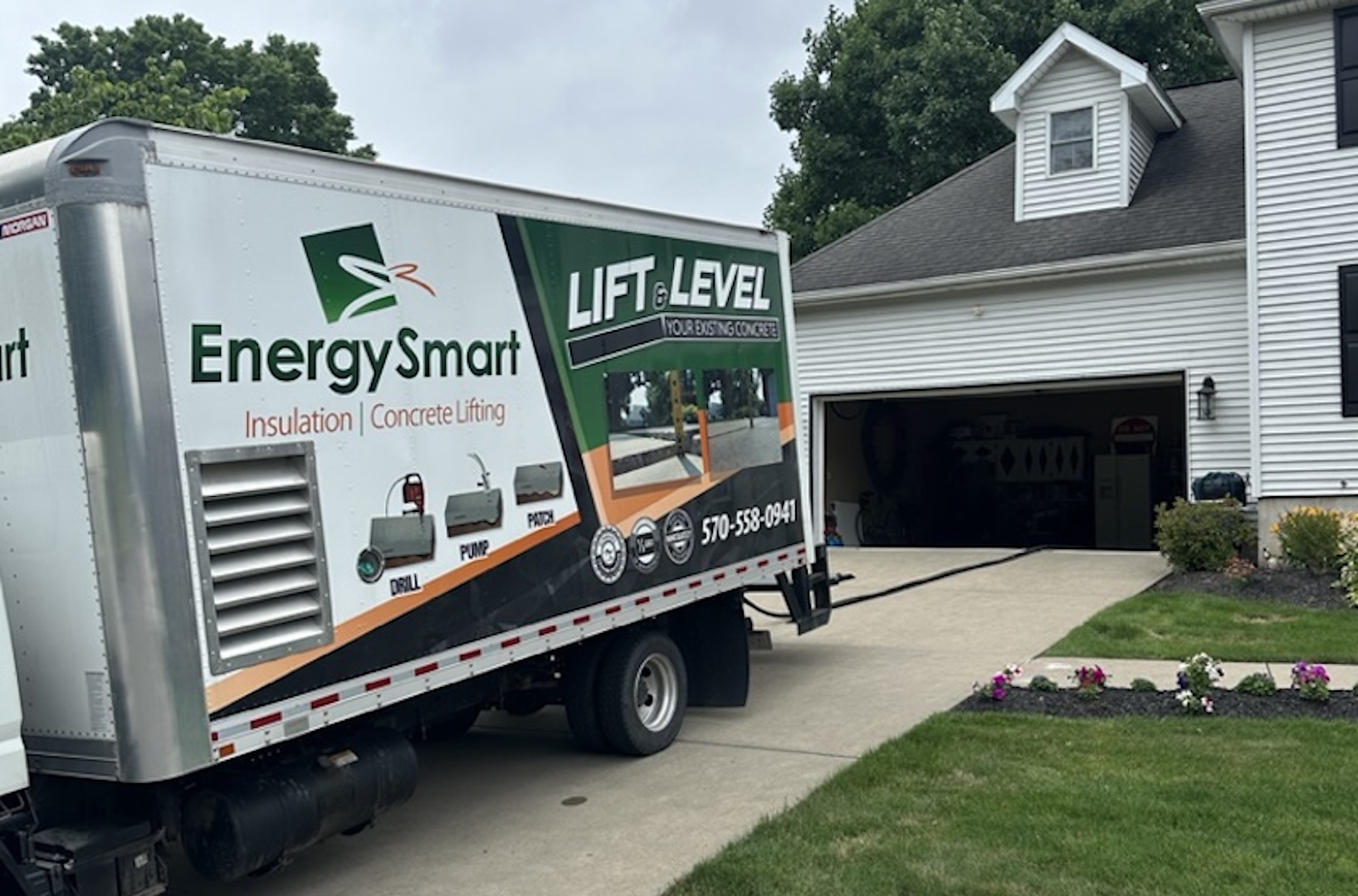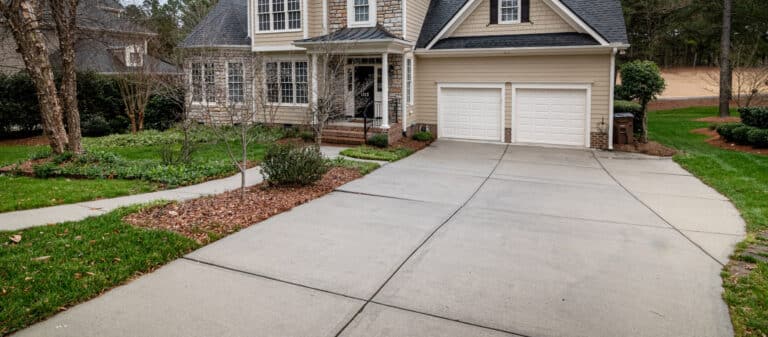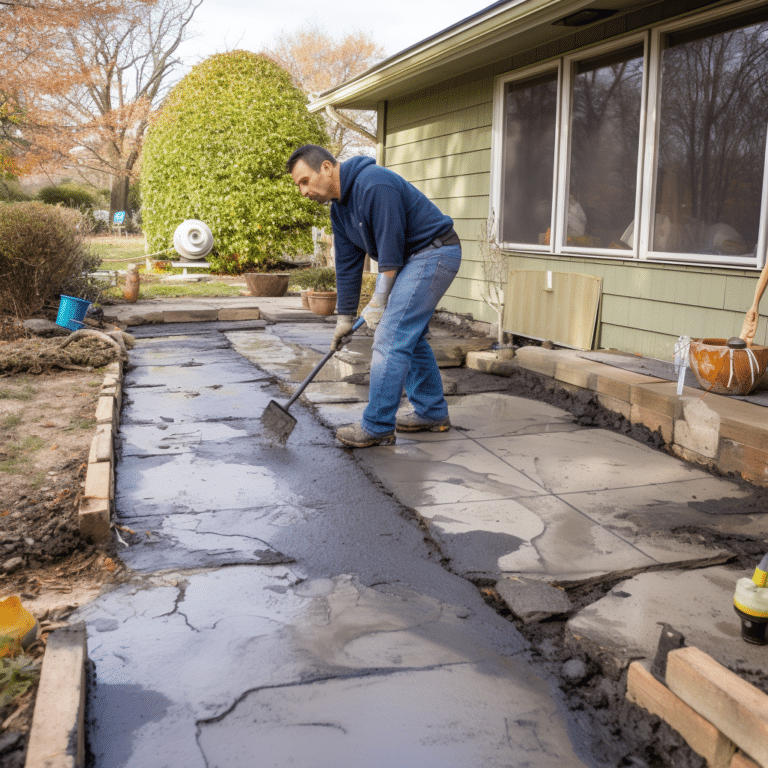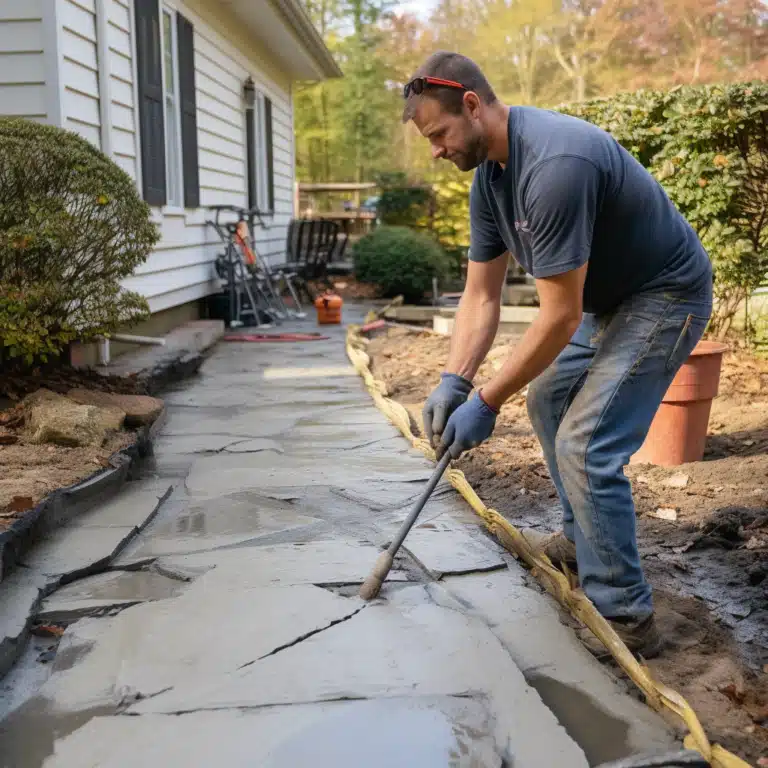Sidewalk repair is one of those grey areas of homeownership that can become a massive liability if ignored.
While most local municipal codes across Pennsylvania agree that sidewalks that abut the property are the owner’s responsibility, the persistent myth that homeowners aren’t responsible for their sidewalks persists.
Sidewalk repair doesn’t have to be that expensive or intrusive. Modern techniques, such as polyfoam lifting, can help level cracked or uneven sidewalks for a fraction of the cost of digging up and replacing the concrete slab.
Learn more about homeowner responsibility for sidewalks in Northeast Pennsylvania and what options are available for repair.
Understanding Sidewalk Responsibility in Pennsylvania
In Pennsylvania, sidewalk maintenance and repair responsibility generally falls on the property owner, not the municipality.
For example, cities like Wilkes-Barre maintain that “after the initial installation of any sidewalk, all repairs and replacements are the responsibility of the abutting property owner.”
However, in cities like Scranton, responsibility for sidewalks may fall on the city if it is deemed city property. This is more commonly the law in highly trafficked public areas, like downtown, but may differ outside commercially zoned areas.
It’s important to check with your local code enforcement officer or attend a local borough, town, or city meeting if you are unsure where your sidewalk’s responsibility lies.
Why Is Sidewalk Repair the Property Owner’s Responsibility?
The logic is straightforward: while the public uses sidewalks, they are located on the public right-of-way adjacent to private property.
Since they directly benefit from that property, the city or township shifts responsibility to the property owner. This helps reduce public spending and puts the duty of care on those closest to the issue.
Common Sidewalk Defects That Require Repair
While property owners are responsible for maintaining their sidewalks, many are willing to let their sidewalks fall into disrepair as long as an injury doesn’t occur. Unfortunately, this is not a risk that many homeowners can afford.
In general, we recommend repairing your sidewalk if it exhibits any of the following signs:
- Cracks wider than ½ inch
- Uneven elevation between slabs (tripping hazard)
- Spalling, chipping, or crumbling surfaces
- Tree root lifting
- Sunken or water-pooling areas
- Complete failure of a sidewalk section
What Happens If You Ignore Sidewalk Repairs?
If your local borough or township notifies you of a sidewalk issue, you’ll typically receive a formal notice giving you a deadline to repair the damage (usually 30 to 60 days).
If you fail to comply, the city may complete the repairs and bill you for the cost, or even fine you.
More commonly, ignoring sidewalk repairs can result in injury to a pedestrian and leave you liable for any damages.
Most homeowners’ insurance policies do offer liability coverage, but repeated claims or negligence could impact your coverage or premiums.
Top Sidewalk Repair Options in Northeast Pennsylvania
Contrary to popular belief, sidewalk repair doesn’t need to be a needlessly expensive task that breaks your bank account. Several options are available, depending on your budget and the extent of the damage.
1. Polyfoam Injection (Polyjacking)
Polyfoam is a modern solution that involves injecting lightweight polyurethane foam beneath the slab to lift and level it. It’s fast-curing, minimally invasive, and works well in the region’s varied soil conditions. Many homeowners prefer this option for its durability and minimal disruption.
2. Full Concrete Replacement
Replacement may be the most reliable option for sidewalks with extensive cracking, crumbling, or severe structural damage. Though more expensive and time-consuming, replacing the slab ensures a long-lasting fix and improved curb appeal. This is often the best choice for older sidewalks with significant wear.
3. Mudjacking
Mudjacking is an older method that uses a slurry of cement and soil to raise sunken concrete. While more affordable up front, Northeast PA is not always ideal for mudjacking due to our freeze-thaw cycles and unstable clay-based soils.
In total, mudjacking only lasts 3-5 years before it needs repair. The heavier material can cause further sinking over time, and it doesn’t always seal gaps as well as polyfoam.
Ways to Offset the Cost of Your Repairs
Some municipalities offer programs to help property owners manage the cost of sidewalk repairs. Contact your city’s Public Works or Streets Department to see if such a program exists in your area.
The Beautiful Blocks program of Northeast Pennsylvania offers a $1,000 dollar-for-dollar matching grant to any homeowner in the cities of Pittston, Scranton, and Carbondale who updates their sidewalks or any exterior home improvement project.
The program is expected to be renewed in 2026, so homeowners should look to apply if they plan to install sidewalks.
If the sidewalk disrepair resulted from a utility project or tree roots, you may be able to cover the cost under your insurance or through a municipal project.
FAQs
Am I responsible for sidewalk repair in Northeast Pennsylvania?
In most municipalities across Northeast Pennsylvania, yes, property owners are typically responsible for maintaining the sidewalk in front of their homes or businesses. Local ordinances often require homeowners to handle repairs for cracks, heaving, or trip hazards to ensure pedestrian safety.
Can I Be Forced to Replace an Entire Sidewalk?
Some cities like Scranton may require full replacement of sidewalk panels, even for minor defects. For example, if more than 25% of a slab is cracked or uneven, code may require full removal and replacement, not just a patch. However, this is typically rare.











